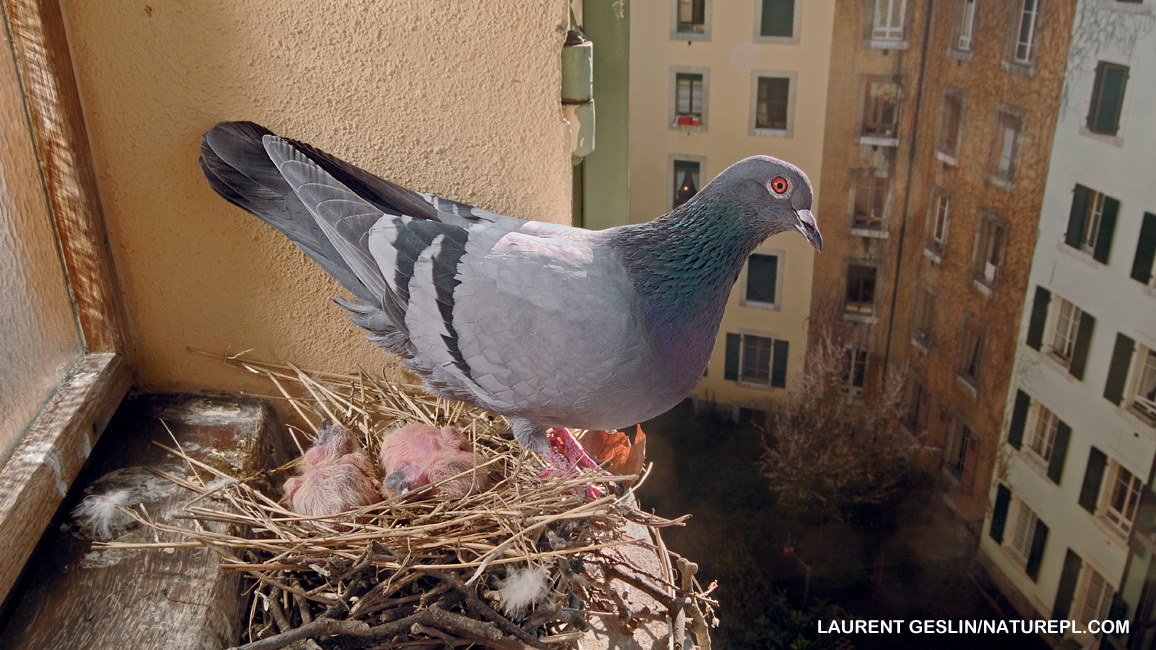
Pigeon: The Everywhere Bird
By Ellen Lambeth and Hannah SchardtThis bird should look familiar. After all, it can be found in almost any city around the world. Birdwatchers call it rock pigeon. You probably just call it “pigeon.”

You might see pigeons every day in your neighborhood. But pigeons didn’t always live in the United States. They lived only in Europe, North Africa, and parts of Asia. Early European settlers brought tame ones over to this country. Some of the tame birds escaped into the wild. They grew in number and quickly spread across the country. The city birds you see now are related to these “pigeon pioneers.”
So why do pigeons find cities such great places to live? A clue comes from their other name: rock pigeon. The truly wild ones live near rocky cliffs in open areas. They make their nests in nooks and crannies in the cliffs, and they find their food by pecking around on the ground for seeds. In a city, tall buildings with window ledges work as well as rocky cliffs. And city sidewalks have plenty of dropped crumbs and other tidbits to peck at. It’s a pigeon paradise! Read on to get to know some of these pigeons a little better

CLEVER BIRDS
Pigeons may be birds, but they aren’t “bird-brained.” They are smart and very trainable. In fact, thousands of years ago, pigeons became the first birds to be trained by people.
Back before cell phones—or any phones at all—people trained pigeons to deliver messages that had been tied to the birds’ legs. The ancient Egyptians and Greeks were among the first. But as recently as World Wars I and II, pigeons flew across enemy lines to pass messages and save the day. A few received special medals for their service!
Even without training, a wild pigeon that’s trapped and released far from home can find its way back—blindfolded! Scientists have learned that the birds use the Earth’s magnetic fields to figure out where to go. In peacetime, people raise tame pigeons for lots of reasons. Some keep them as pets. Others train them to fly in races. And others breed them to have fancy, colorful feathers for show.
PIGEON WATCH
Pigeons are common. But they are uncommonly interesting to watch! Would you like to know why the pigeons you see may bow their heads, drag their tails, or fluff up their neck feathers? Visit the National Audubon Society’s Pigeon Watch page at RangerRick.org/pigeonwatch to learn about pigeon behaviors. On that page, print out Audubon’s Pigeon Watch Checklist. Then head to a park where pigeons flock. Watch the birds closely. What differences do you spot between pigeons? Can you pick out mated pairs? How do they act toward each other? By the time you’ve filled out your checklist, you’ll be a pigeon-watching pro!

















